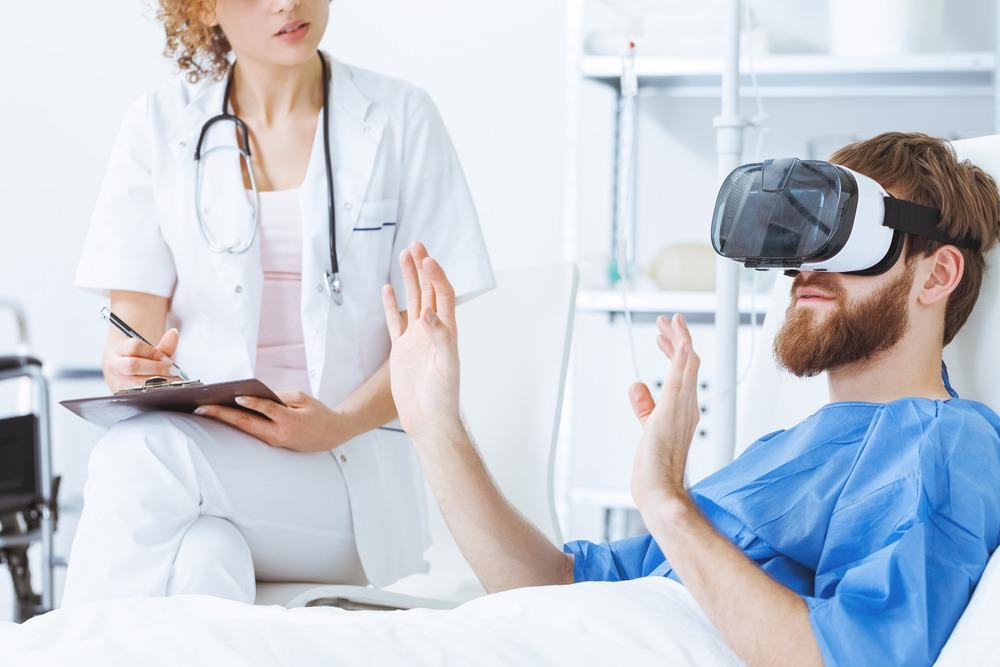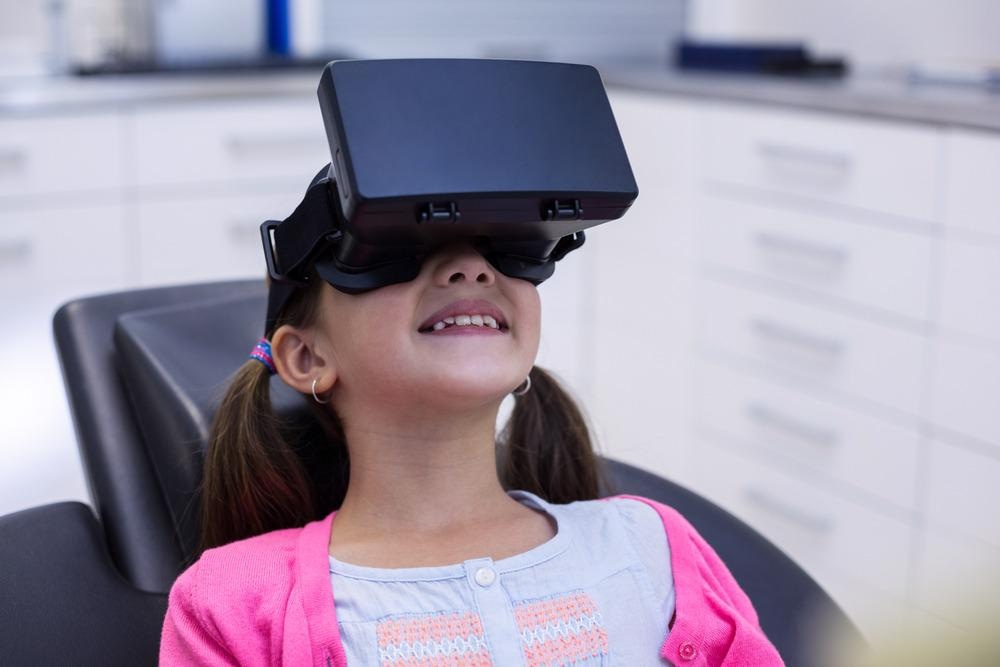Introduction
Shifting the industry towards Virtualization and Digitalization
Emerging Technologies that enable Virtualization
Utility of Virtualization Technologies in Healthcare
The Value of a Virtual Presence
Augmented Reality
Utility within healthcare
'Nixi for Kids'
'I'm going to have a transplant'
Concluding thoughts
References
The transition of healthcare to a virtual environment is a global societal movement toward a better and more convenient organization of medical care for a person and maintaining a healthy lifestyle.
Health care costs are rising worldwide, but its total informatization makes these costs smart. Virtual hospitals, e-registration services, EHR, e-prescriptions, medical image archives, tele and mobile medicine, and online adjustment of doctor's prescriptions will allow patients and doctors to assess the tectonic shifts caused by healthcare virtualization.

Image Credit: Frame Stock Footage/Shutterstock.com
Shifting the industry towards Virtualization and Digitalization
The development of digital technologies in medicine is one of the priority areas worldwide. Numerous conferences, forums, and platforms for presenting the latest developments in healthcare, such as CPhI Worldwide, only confirm this. The prospects for the use of digital information systems are comprehensive and multifaceted.
The systems of electronic appointments already functioning today with subsequent reminders and sending the results to a smartphone, advances in the field of telemedicine, "clouds" for storing and processing information, as well as the latest developments in the pharmacological industry all indicate the importance and need for further development of the sphere.
Emerging Technologies that enable Virtualization
Augmented and virtual technologies are realities used in the creation of video games in the entertainment industry and are also actively used in other sectors, including healthcare.
Virtual medicine is a component of telemedicine. The use of augmented and virtual reality gives new impetus development of medical informatics. Innovative projects in digital health improve the interaction between a doctor and the patient.
Virtual and augmented reality can solve various tasks, such as the gamification of medical education (turning work games), medical rehabilitation, helping patients cope with trauma, reducing phobias, etc.

Image Credit: Photographee.eu/Shutterstock.com
Utility of Virtualization Technologies in Healthcare
Researchers have determined that virtual reality (VR) can create a natural environment in which a patient can experience the effect of telepresence. The effect of telepresence means that the patient can experience sight, hearing, touch, and other senses when receiving their treatment.
Essentially, there is a feeling of complete presence in an artificially modeled three-dimensional digital world.
The telepresence effect is an umbrella term that includes touch, liveliness, and interactivity. Sensory vividness refers to the representative richness of the mediated environment, sensory depth, and latitude (perception goes immediately after several sense organs).
Interactivity refers to the speed, range, and range of the display, the extent to which users can participate in changing the form and content mediated environment in real-time.
This means that the patient can manipulate the content at their discretion regarding the environment and actions taken by the characters on the carrier. If virtualization features, including speed, range, and mapping, are poorly designed, the patient may feel disconnected from the virtual experience.
The Value of a Virtual Presence
Another important aspect of virtualization within healthcare is the feeling of involvement: the more vivid and more interactive the specific environment is, the greater this environment causes the sense of presence.
Content manipulation multimedia is the most successful in creating a sense of telepresence when multimedia is indirectly associated with the user's body. This creates an effective environment for acquiring new user experiences that can be successfully used in healthcare.
Augmented Reality
Augmented reality (AR) is a technology that overlays sensory information generated by a computer in text, audio, or computer graphics onto physical objects. Thus, the image is simulated by technical means real environment in real-time.
This technology creates an environment in which virtual objects are combined with reality, thereby integrating computer-generated objects into the real world using image settings on glasses, virtual reality helmets, or special tactile devices (haptics), which can be gloves, collars, suits, or sensors.

Image Credit: Zyabich/Shutterstock.com
Utility within healthcare
Augmented reality provides an alternative to traditional forms of human-machine interaction. It facilitates access to certain technologies for groups of patients with special needs, such as people with disabilities, the elderly, and children, improving their quality of life.
So, when providing pediatric care, it is vital to help children feel comfortable during medical procedures and tests. Augmented reality technologies using gamification help children get involved in games that stimulate physical activity or reduce anxiety.
For example, such projects for the use of augmented reality in pediatrics have proven their success, like 'Nixi for kids' or 'I'm going to get a transplant,' the main purpose of which is to inform and reassure young patients before operations to reduce their level of anxiety.
'Nixi for Kids'
The Nixi for Kids project aims to reduce preoperative anxiety in children. To do this, children use a VR device, through which they can view 360° immersive videos explaining all procedures of the operation and how it will affect their health.
'I'm going to have a transplant'
The "I'm going to have a transplant" app explains to little patients what bone marrow transplantation is and what steps it takes to make it easier for them to understand the procedure which they will go. This application includes a fairy tale, a video, and three children's games.

Image Credit: wavebreakmedia/Shutterstock.com
Concluding thoughts
In recent years, virtual and augmented reality systems have become more personalized, portable, better oriented in real-time, and give a more realistic user experience by adding optical, tactile, and sensory elements to the spectrum of sensations.
In addition, such devices are becoming more popular and accessible to patients and healthcare professionals. VR and AR technologies are successfully used in medical education or the training of rehabilitation patients after a stroke in need of improved cognitive abilities, speech, and memory. These virtualization technologies can also reduce the cost of training and medical rehabilitation, further solidifying the importance of Virtualization in healthcare.
References:
- Nixi for Children. Available at: https://nixiforchildren.com. Retrieved 18 February 2022.
- Ma, Minhua; C. Jain, Lakhmi; Anderson, Paul (2014). Virtual, Augmented Reality and Serious Games for Healthcare 1. Springer Publishing.
- Bukhari, Hatim; Andreatta, Pamela; Goldiez, Brian; Rabelo, Luis (January 2017). "A Framework for Determining the Return on Investment of Simulation-Based Training in Health Care". INQUIRY: The Journal of Health Care Organization, Provision, and Financing.
- Johns Hopkins Medicine. Patient Care: Tertiary Care Definition. Archived 2017-07-11 at the Wayback Machine. Retrieved 19 February 2022.
- Christensen, L.R.; Grönvall, E. (2011). "Challenges and Opportunities for Collaborative Technologies for Home Care Work". In S. Bødker; N. O. Bouvin; W. Letters; V. Wulf; L. Ciolfi (eds.). ECSCW 2011: Proceedings of the 12th European Conference on Computer Supported Cooperative Work, 24–28 September 2011, Aarhus Denmark.
Further Reading
- All Healthcare Content
- Healthcare Systems Around the World
- What is the Role of Regulatory Bodies in Healthcare?
- How is the ‘omics’ Revolution Changing Healthcare?
- Primary Healthcare Providers
Last Updated: May 31, 2022
Source: Read Full Article
